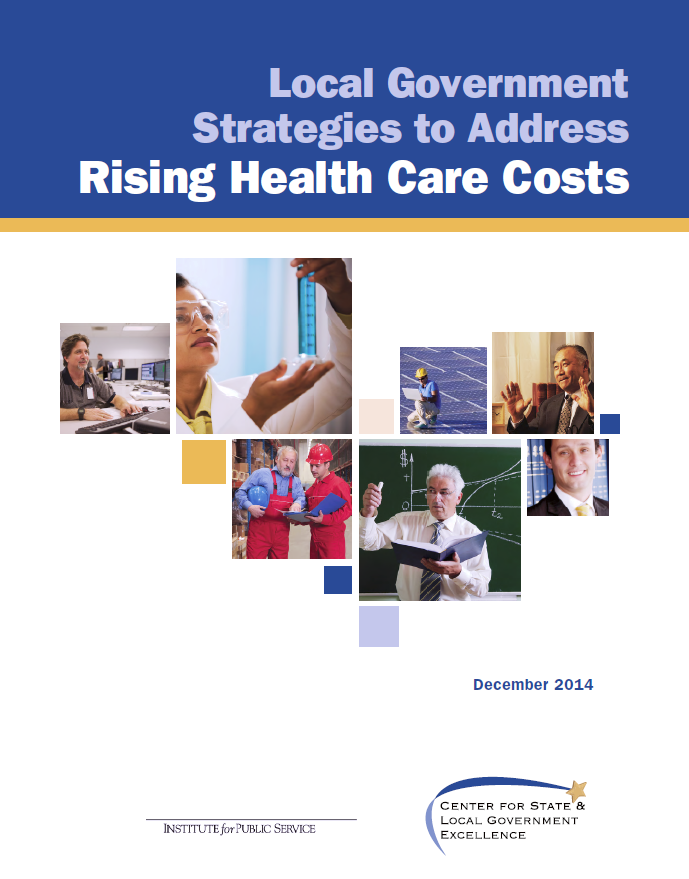
A new study released by the Center for State and Local Government Excellence shows that although health care costs have slowed recently, rising costs over the last decade have prompted many local governments to make changes to their plans and strategies. The study looks at what is driving the increase in health care costs and what local governments are doing about it.
The study, “Local Government Strategies to Address Rising Health Care Costs” describes the findings from a national survey conducted by the Center for State and Local Government Excellence (slge.org) and the International Public Management Association for Human Resources (ipma-hr.org). Two hundred fifty-two IPMA-HR members took part in the survey, which was conducted in August 2014 at the request of the University of Tennessee Institute for Public Service (IPS).
Among the top cost drivers of local government health care increases cited by survey respondents were: increased claim costs (64 percent), an aging workforce (46 percent), insurance company price increases (45 percent), and federal health care policy (45 percent).
Strategies implemented by local governments to control health care costs included increased cost sharing of premiums paid by employees and changes to the way health insurance is provided. Nineteen percent of those reporting changes shifted employees to a high-deductible plan with a health savings account and 14 percent established a health reimbursement arrangement.
The report includes six case studies describing how local governments have produced savings in their health benefit costs.
- Disease management programs, on-site clinics, dependent eligibility audits, and regular review and rebidding of health care vendor contracts have achieved significant savings. Asheville, North Carolina, reports it has saved $4 for every $1 invested in chronic disease management.
- Corpus Christi, Texas, reduced health care costs by $1.84 million by conducting a dependent eligibility audit and establishing an on-site wellness clinic.
- Greater access to comprehensive medical care and related support services for offenders resulted in lower reincarceration rates and total inmate population in Hampden County, Massachusetts.
- Diverting offenders with extreme behavior problems into mental health services opened up capacity at the Buncombe County, North Carolina, Detention Facility, making it possible to rent the facility to crowded community jails and to generate $1,038,717 in new revenue.
“Local government programs that contain costs and improve employee health are among the most important strategies,” noted Elizabeth Kellar, president/CEO, Center for State and Local Government Excellence. “Wellness and disease management programs are offered by a majority of local governments and are valued by employees.”
Local governments report that providing easy access to health services at work sites not only supports employee wellness, but also reduces employee absenteeism and health care costs. With the percentage of employee compensation that goes to health benefits rising over the past 10 years, many local governments have made significant changes to their health benefits.
New, Reduced Membership Dues
A new, reduced dues rate is available for CAOs/ACAOs, along with additional discounts for those in smaller communities, has been implemented. Learn more and be sure to join or renew today!
